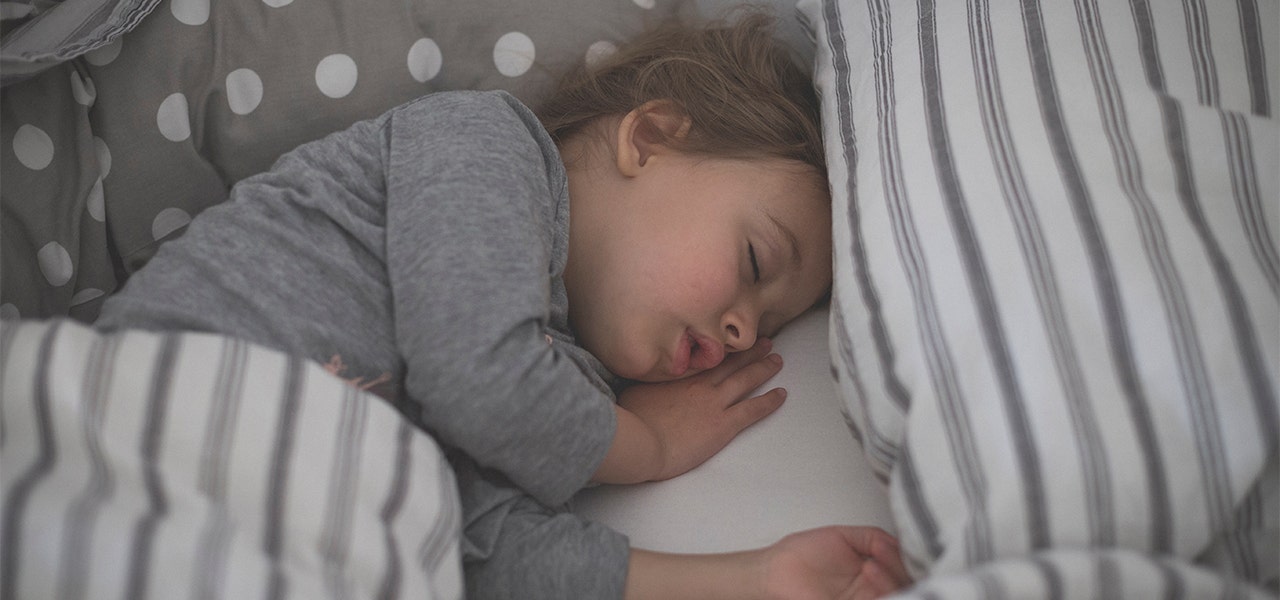Spring Forward … we’ve all got mixed feelings about it. On one hand, the extra hour of daylight doesn’t just feel like a gift; it feels absolutely necessary to our survival. We did it. We survived another winter. Brighter days are ahead.
On the other hand, who wants to LOSE an hour of sleep? Nobody, that’s who. ESPECIALLY not tired parents. Everyone knows that a consistent bedtime routine is a must for young children and that even the slightest deviation can wreak havoc on everybody’s sleep.
However, with the right strategy, the onset of Daylight Saving Time (DST) may actually help you to get your kiddos to sleep better in the long run. Here’s how.
Is this the Last Spring Forward?


You read that right. This whole “fall back/spring forward” deal could be ending – soon. In March 2022, the U.S. Senate passed the Sunshine Protection Act of 2021, which would abolish clock changes in favor of permanent daylight saving time if enacted. In order for this to happen, the bill needs to be passed in the House and approved by the President.
However, nearly a year later, the bill has yet to be discussed by the House – let alone voted on. Still, this year’s time change becoming the last one remains a possibility.
The Spring Time Change Is Typically Easier for Kids
For adults, the spring time change can be a bit of a doozy. But for kiddos, especially our littler ones, the spring time change is usually easy-peasy. Most children are early birds in tune with their circadian rhythms. They feel sleepy shortly after sunset, and they wake with sunrise.
Unless you have to wake your child early to get them to daycare or preschool on time, spring forward just means that they appear to sleep in an hour later in the morning – no complaints here!
How to Use DST to Reset Your Kids' Sleep Schedule
When you move the clocks forward an hour, your little one will naturally sleep in an hour later. This is great, but the work doesn’t end here – there are some important steps you need to take to lock this behavior in if you want it to stick.
Sleeping in an hour later is great, but it also means that bedtime gets pushed an hour later. If you try to put your kiddo to bed at their normal hour, you may find that they are fighting sleep. And if they do fall asleep at their regular bedtime, they’ll just start rising an hour earlier all over again. Get the picture?
If you can, the best practice to follow is to push bedtime an hour later at first, and gradually work your way back to your goal bedtime. Every two or three days, make bedtime 10-15 minutes earlier. If your little one is still sleeping in until your goal wakeup time, you can continue to march that bedtime backwards.


What if You Can't Gradually Adjust Sleep?
Sleep science isn’t rocket science, and sleep solutions aren’t one-size-fits-all. If you try the gradual method and it only results in an earlier wake time, that doesn’t mean you’re doing anything wrong. Every child has different sleep needs, and what’s important is that they are getting the sleep they need.
If your priority is a later wake-up time, and you don’t mind a later bedtime, then make that your plan! Simply shift everything — bedtime, nap times and even feeding times — forward one hour. This way, your child’s body clock doesn’t change, but they will still be sleeping “later” … at least, according to the clock they will be.
Additional Time Change Sleep Tips


Whether you’re raising an early riser or not, shifting the clock in any direction is bound to cause some changes in sleep. Luckily, we’ve got some tools for you that will help you keep your little ones sleeping consistently year-round.
More Daylight Means More Sleep at Night
Our sleep-wake cycles are governed by the sun – and this is especially true for little ones! When it’s time to wake up, open the nursery blinds and let the sunlight in. If you can, try to spend some time outside in the daylight with your kiddo every day. You’ll help to boost their body’s natural melatonin production when the sun goes down, meaning easier bedtimes and better sleep.
Routine, Routine, Routine!
Bedtime routines aren’t arbitrary rules – it’s biology! If you follow a consistent, nightly bedtime routine for your little one, eventually their body learns that that routine means it’s time to wind down for bed. Give your child a soothing bath before bed, pick out some special sleepy time pajamas, set aside time for snuggling or reading in bed together… bedtime routines can look however you’d like them to! Just remember: consistency is key.
Be Patient
Raising a child isn’t linear, as much as we’d like it to be! You’re bound to have unfortunate early mornings, middle of the night wakeups and unplanned late nights where your little one just won’t sleep, no matter how much they need it. Be patient, and don’t give up after a long night or two. It may feel tough, but you’ve got this … and so does your little one!
And, of course, you’re not doing this alone – you’ve got Naturepedic on your side! Whether you’re looking for baby sleep tips, organic living advice or organic kids mattresses made from the finest natural materials on Earth, we’ve got you covered.
 BABY
BABY  KIDS
KIDS  ADULT
ADULT  LEARN
LEARN  STORES
STORES 